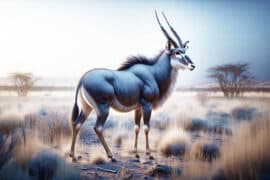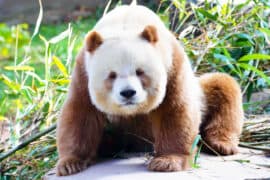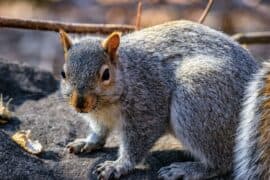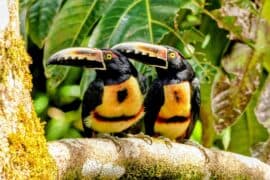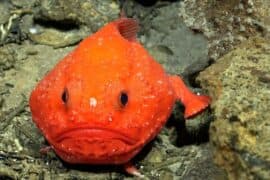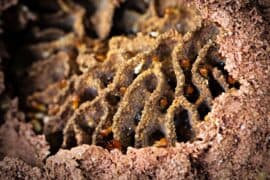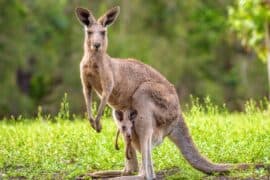Northern flicker
(Colaptes auratus)
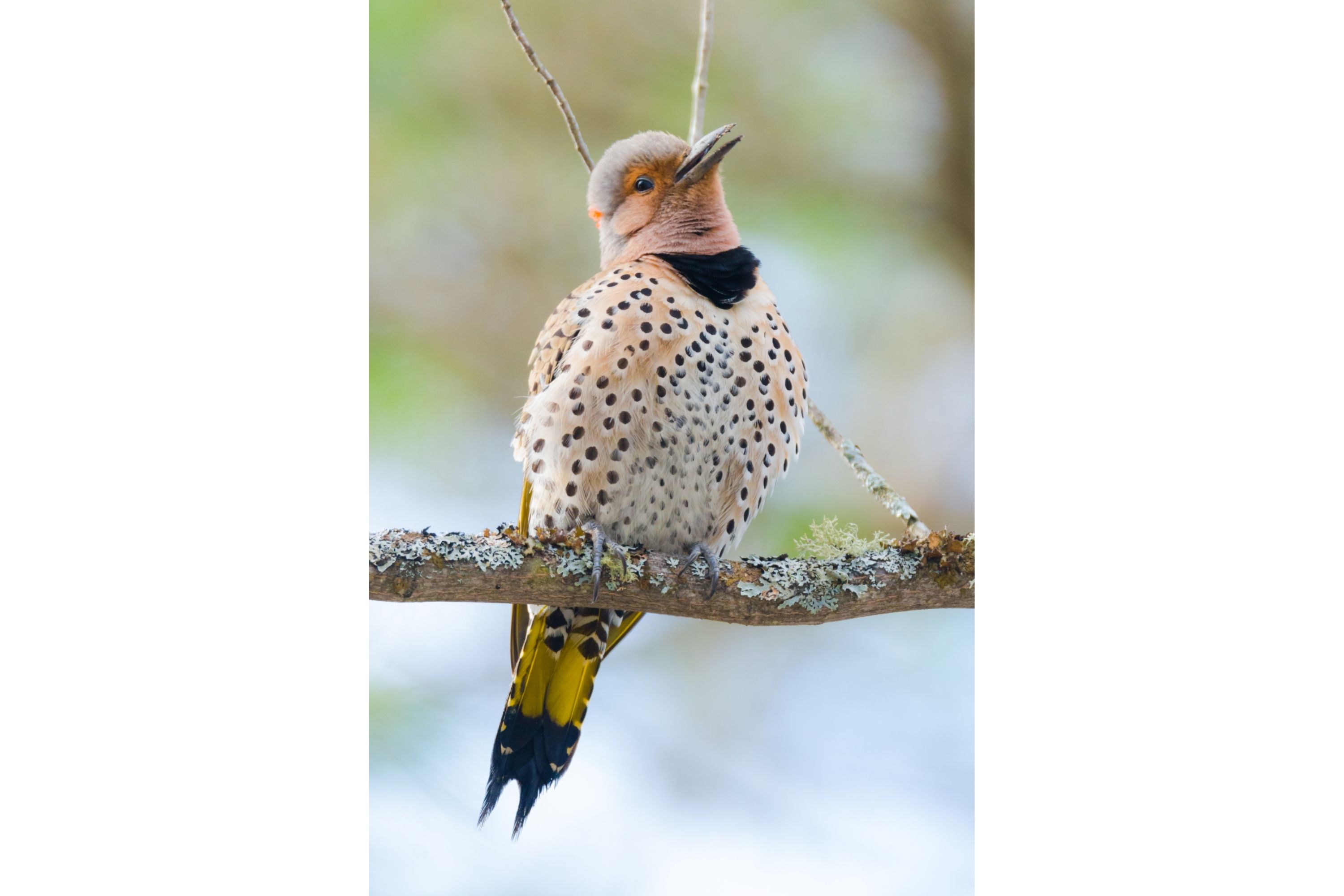
Description
Colaptes auratus, also known as the Northern Flicker, is a bird species belonging to the woodpecker family, Picidae. This species is distributed widely across North America, and has a wide range of subspecies that vary in appearance and behavior. In this article, we will explore the physical characteristics, behavior, habitat, diet, and conservation status of the Northern Flicker. Physical Characteristics: The Northern Flicker has several distinctive physical characteristics, including: Size: It is a medium-sized woodpecker that measures about 12-14 inches (30-36 cm) in length. Weight: The Northern Flicker weighs between 3-5 ounces (85-140 grams). Head and Back: Its head and back are brownish-gray in color. Bib: It has a black bib on its chest. Belly: Its belly is spotted. Wings and Tail: The wings and tail are a contrasting reddish-brown color with black bars. Mustache Stripe: The male Northern Flicker has a black mustache stripe while females do not. In summary, the Northern Flicker has a unique appearance that sets it apart from other woodpecker species. Behavior: The Northern Flicker is known for its unique behavior, which includes both ground foraging and tree climbing. Here are some of their notable behaviors: Ground Foraging: Northern Flickers are unique among woodpeckers in that they spend a lot of time on the ground foraging for food. They feed on insects such as ants, beetles, termites, and caterpillars. Tree Climbing: Despite their ground foraging habits, Northern Flickers are also excellent climbers and often climb trees in search of insects or to excavate their nests. Drumming: Northern Flickers engage in a behavior known as drumming, which involves rapidly pecking on a tree trunk or other hard surface. They use this behavior to communicate with other Northern Flickers and to establish their territories. Flicker Flight: During the breeding season, Northern Flickers engage in a courtship display known as the "flicker flight." They fly up to a height of about 100 feet (30 meters), then glide down with their wings held in a V-shape. This display is thought to be a way for the male to show off his strength and agility to potential mates. Nesting: Northern Flickers excavate their nests in dead or dying trees, often using the same nest cavity year after year. They may also use artificial nest boxes. Overall, the Northern Flicker's behavior is fascinating and unique among woodpecker species, making it a favorite among birdwatchers and nature enthusiasts. Habitat: The Northern Flicker is a widespread species found throughout North America. It is known to inhabit a variety of habitats, including forests, woodlands, open fields, and urban areas. Here are some specific habitats where the Northern Flicker is commonly found: Deciduous Forests: Northern Flickers can be found in deciduous forests, especially in areas with large trees and open understory. They are often seen foraging on the ground in these habitats. Coniferous Forests: Northern Flickers can also be found in coniferous forests, especially in areas where dead trees or snags are present for nesting. Grasslands and Agricultural Fields: Northern Flickers are often found in grasslands and agricultural fields where they forage on the ground for insects. Urban Areas: Northern Flickers have adapted to urban areas and can often be seen in parks, golf courses, and suburban yards with large trees. Riparian Areas: Riparian areas with streams and water sources can also be a suitable habitat for Northern Flickers. Northern Flickers can be found in a wide range of habitats, as long as there are trees or snags for nesting and abundant sources of food. Diet: The Northern Flicker has a diverse diet, consisting mainly of insects and some fruits and seeds. Here are some specific food items that Northern Flickers commonly consume: Ants: Ants are a major component of the Northern Flicker's diet. They have a long, sticky tongue that they use to capture ants from their nests. Beetles: Northern Flickers also consume a variety of beetles, including wood-boring beetles and bark beetles. Termites: Termites are another common food item for Northern Flickers, especially in warmer climates where they are abundant. Caterpillars: Northern Flickers will also eat caterpillars, which can be found in trees and shrubs. Fruits and Berries: Northern Flickers will occasionally eat fruits and berries, such as raspberries, blackberries, and mulberries. Seeds and Nuts: Northern Flickers will also eat seeds and nuts, including acorns and sunflower seeds. The Northern Flicker's diet is diverse and can vary depending on the habitat and season. They are skilled foragers and use their sharp beaks and long tongues to capture and extract their food from a variety of sources. Conservation Status The Northern Flicker is a species of least concern on the International Union for Conservation of Nature (IUCN) Red List. This means that the species is considered to have a large and stable population, and there are no immediate threats to its survival. However, the Northern Flicker, like many other bird species, faces a number of potential threats, including habitat loss and degradation, pesticide use, and collisions with buildings and vehicles. In some areas, the introduction of European Starlings and House Sparrows, both invasive bird species, has also been linked to declines in Northern Flicker populations. Conservation efforts for the Northern Flicker focus primarily on protecting and restoring its habitat, particularly areas with dead or dying trees that are important for nesting. Artificial nest boxes have also been used successfully to provide additional nesting sites. In addition, efforts to reduce pesticide use and increase awareness of the importance of birds in ecosystems can help to protect the Northern Flicker and other bird species. Overall, continued monitoring and conservation efforts are necessary to ensure the long-term survival of the Northern Flicker and its unique ecological role in North American ecosystems. In conclusion, the Northern Flicker is a fascinating bird species that is highly adaptable and widely distributed across North America. With their unique appearance, behavior, and adaptations, they are a favorite among birdwatchers and nature enthusiasts. While they are not currently threatened, conservation efforts are needed to ensure the continued survival of this species and its subspecies.
Taxonomic tree:

